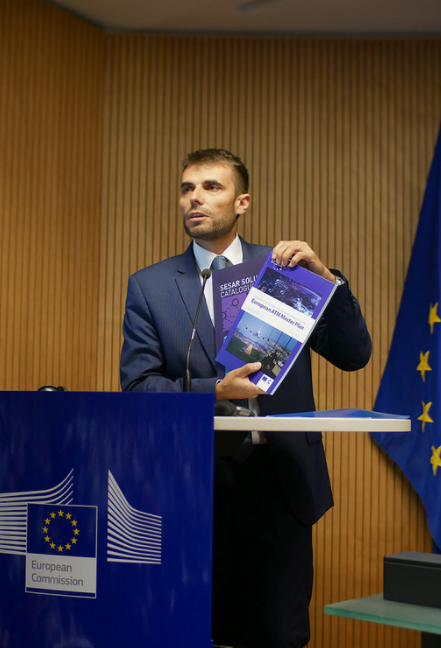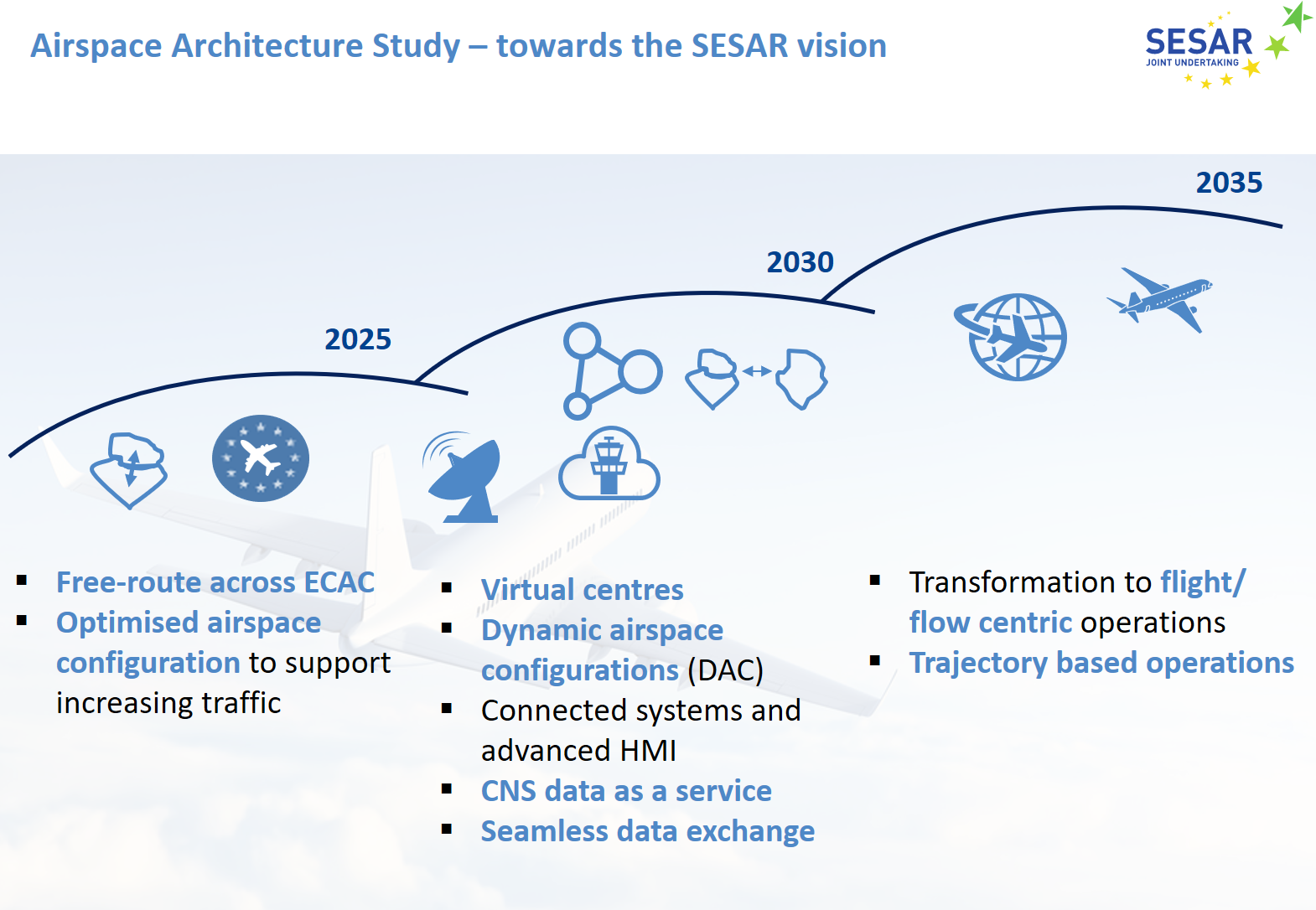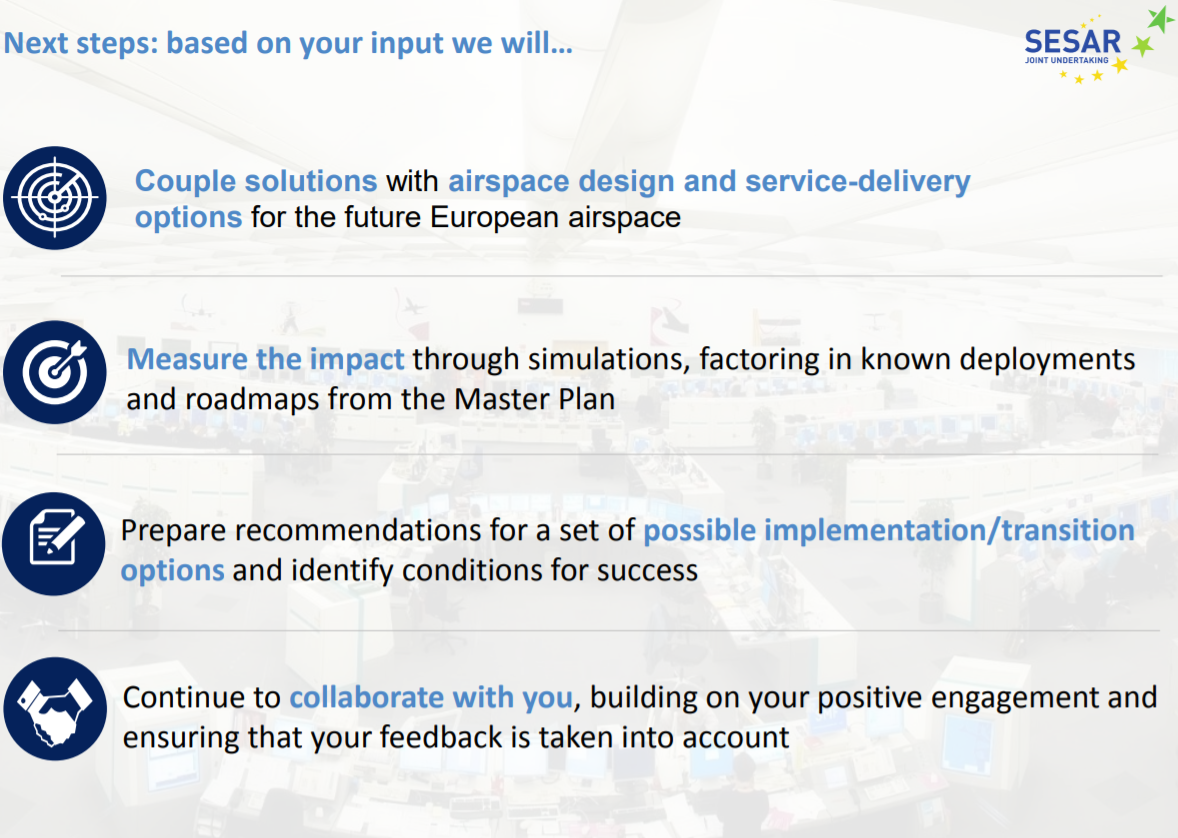On 5-6 July, stakeholders from aviation and air traffic management (ATM) gathered in Brussels to discuss how to accommodate growing traffic through optimised airspace configuration coupled with the implementation of new technology. The workshop was an opportunity to openly exchange on the scope, objectives and initial insights of the Airspace Architecture Study, which the SESAR Joint Undertaking (SESAR JU) is mandated to deliver by the end of 2018 in close collaboration with the Network Manager.
The study is timely given that traffic grew by 3.4 % in the first five months of 2018, leading to increased delays due mainly to staffing and capacity issues. The outlook is that traffic will continue to grow by 1.9% annually between now and 2040 [1]. Mindful of this upward trend, the study will propose how the European airspace architecture should look in the medium to long term (2035), and the steps to be taken to achieve this, building on the vision of the European ATM Master Plan. Specifically, the study will:
- Support the development of the Single European Sky vision towards 2035
- Provide high-level requirements for the intended airspace organisation and design as well as for the efficient service provision architecture and enabling infrastructure
- Leverage technologies and concepts included in the European ATM Master Plan
- Develop recommendations for possible implementation plans and conditions for success
- Respond to the aviation community, in particular airspace users’ needs
The workshop discussed the current system and factors that are hampering performance. These include: limited interoperability and continued use of bespoke systems; lack of flexibility in managing capacity and resource allocation, an inability to scale up the system according to traffic fluctuations; limited take-up of existing solutions and technology enablers; and a lack of resilience/contingency built into in the system.
The workshop then went on to look at the key principles for optimising European airspace, which range from responding to civil and military airspace users, as well as operational and performance requirements, to taking into account traffic forecasts and allowing adaptable sector configurations.
Participants were also given a preview of some of the game changing solutions, which if coupled with a re-configuration of the airspace, could bring maximum impact primarily in terms of increasing capacity. These include automation tools to support controllers, solutions enabling flight-centric operations, data-sharing (SWIM), virtual centres and CNS as a service.

During the workshop, representatives from air navigations service providers, the Network Manager, airspace users, the military, airports and professional staff organisations were given an opportunity to highlight the needs and matters of priority for their stakeholder group. While there were some diverging opinions on specific aspects of the debate, the stakeholders agreed on the need to act rapidly and stay aligned with one vision (Master Plan) and the goal of delivering greater service delivery to airlines and passengers.
Building on positive engagement and feedback from the workshop, the SESAR JU will work with the Network Manager on simulating and assessing the impact of different scenarios. With outcomes from this assessment, the SESAR JU will then prepare recommendations on possible implementation/transition options. The results of this work will be discussed further with stakeholders through bi-laterals and at a dedicated workshop in November. The SESAR JU aims at delivering the completed study by the end of 2018.

View workshop presentations
Watch the workshop (webstreaming):
More reading
Top 5 questions on European Architecture Study
[1] Challenges of Growth, Eurocontrol, 2018
